one of the problems of human beings in today’s world is to provide drinkable water. A solution to this problem is to use domestic water purifiers. Sometimes the amount of water that water purifiers produce is not sufficient or maybe we have some industrial aims. In such a case we need an industrial water purifier. The question “what is an industrial water purifier” is answered in detail in the following article. The filtration and separation demands of industrial water treatment systems are diverse. They can range from relatively simple and compact to sophisticated and multi-unit processes serving several purposes. 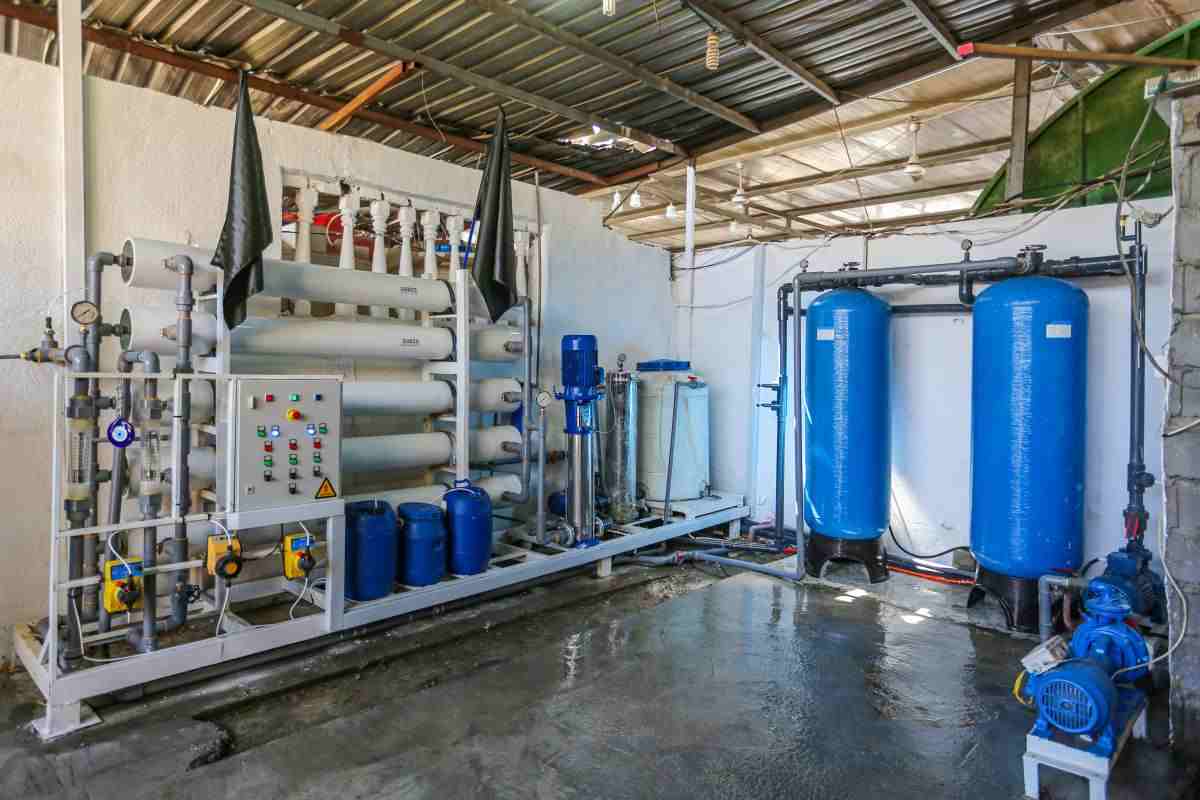 If you are unfamiliar with water treatment, you may wonder, "What is an industrial water treatment system, and how does it function?" Since industrial water treatment is a complicated family of technologies and systems, this article will focus on providing a high-level overview of the commonly used technologies and summarizing how they function, therefore assisting you in identifying the optimal options for your business. What is a water treatment system for industrial use? The purpose of an industrial water treatment system is to make water more suitable for consumption, production, or even dumping. However, each system will differ based on the demands of the institution, and many of the technology that comprises these systems may be comparable. Typically, the most important industrial water treatment systems consist of:
If you are unfamiliar with water treatment, you may wonder, "What is an industrial water treatment system, and how does it function?" Since industrial water treatment is a complicated family of technologies and systems, this article will focus on providing a high-level overview of the commonly used technologies and summarizing how they function, therefore assisting you in identifying the optimal options for your business. What is a water treatment system for industrial use? The purpose of an industrial water treatment system is to make water more suitable for consumption, production, or even dumping. However, each system will differ based on the demands of the institution, and many of the technology that comprises these systems may be comparable. Typically, the most important industrial water treatment systems consist of:
- Systems for raw water purification
- Treatment of boiler feed water systems
- Systems for cooling tower water treatment
- Systems for treating wastewater
Depending on the pollutants that need to be removed, the technologies employed and the sequence in which they occur in each water treatment system will vary, but it is easy to predict what you would encounter in these four common industrial treatment systems. The following is a breakdown of typical components of a water treatment system: Systems for raw water purification What they constitute Rainwater, groundwater, wells, lakes, and rivers are examples of untreated water sources that occur naturally in the environment.  If adequately filtered, raw water may be utilized in industrial settings for chilling, washing, product formulations, and even human consumption. Raw water treatment systems are utilized for the pretreatment and optimization of source water, often to enhance the production efficiency and process performance of a specific application. Examples include the pretreatment of cooling tower/boiler feed water, process/production water, and drinking water. Typically, raw water treatment aims to protect downstream equipment against scaling, fouling, corrosion, and other kinds of damage or premature wear caused by pollutants in the source water. Generally speaking, raw water treatment systems eliminate suspended/colloidal particles, silica/colloidal silica, iron, bacteria, and hardness. How they operate Because raw water treatment systems are developed with unique treatment objectives and use in mind, the installation process may vary. Nevertheless, the following processes illustrate the typical operation of a raw water treatment system: Intake. Gravity and/or pumps are used to bring raw water into a facility. To prevent big debris from entering the system, water is often filtered via a metal grate or mesh screen. Clarification. Clarification is a multistep procedure used to remove suspended particles from a solution. Clarification begins with coagulation, where chemical and/or pH modifications induce particles to begin clumping together, followed by flocculation, where physical agitation promotes the production of bigger particles. The stream then travels to a gravity settler that permits sediments to settle to the bottom in a sludge blanket during the sedimentation process. Finally, the stream is filtered via a gravity sand filter to capture any remaining minute particles.
If adequately filtered, raw water may be utilized in industrial settings for chilling, washing, product formulations, and even human consumption. Raw water treatment systems are utilized for the pretreatment and optimization of source water, often to enhance the production efficiency and process performance of a specific application. Examples include the pretreatment of cooling tower/boiler feed water, process/production water, and drinking water. Typically, raw water treatment aims to protect downstream equipment against scaling, fouling, corrosion, and other kinds of damage or premature wear caused by pollutants in the source water. Generally speaking, raw water treatment systems eliminate suspended/colloidal particles, silica/colloidal silica, iron, bacteria, and hardness. How they operate Because raw water treatment systems are developed with unique treatment objectives and use in mind, the installation process may vary. Nevertheless, the following processes illustrate the typical operation of a raw water treatment system: Intake. Gravity and/or pumps are used to bring raw water into a facility. To prevent big debris from entering the system, water is often filtered via a metal grate or mesh screen. Clarification. Clarification is a multistep procedure used to remove suspended particles from a solution. Clarification begins with coagulation, where chemical and/or pH modifications induce particles to begin clumping together, followed by flocculation, where physical agitation promotes the production of bigger particles. The stream then travels to a gravity settler that permits sediments to settle to the bottom in a sludge blanket during the sedimentation process. Finally, the stream is filtered via a gravity sand filter to capture any remaining minute particles. 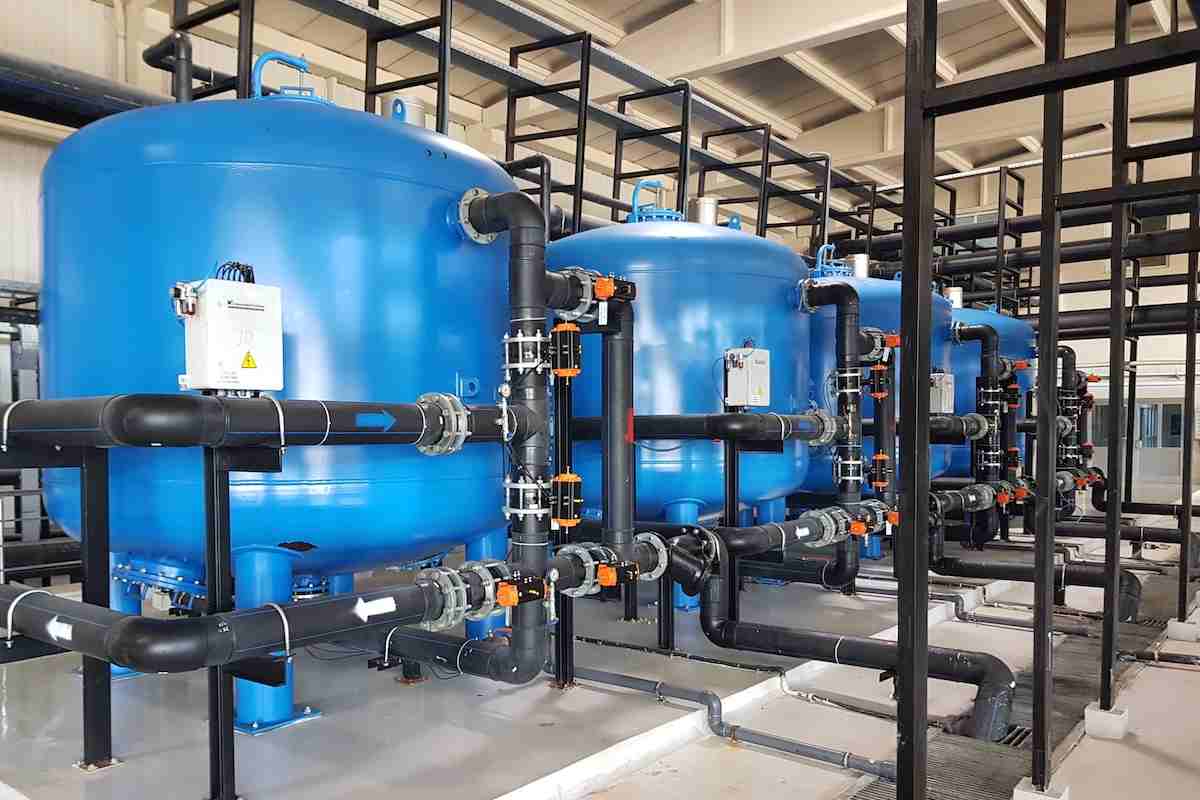 Disinfection. If biological pollution and/or potability of the water is an issue, the water may be disinfected to eliminate pathogens. Chemical disinfectants (e.g., chlorine), physical disinfectants (e.g., UV or heat), and some types of membrane filtration can be used to achieve disinfection. Lime softening. In rare instances, a lime softening step may be added to streams with a high mineral or sulfate concentration to lessen hardness. The procedure involves the use of lime or lime soda to increase the pH of the stream, which in turn facilitates the precipitation of mineral components. Ion transfer (IX). In certain circumstances, the raw water treatment system may incorporate an IX unit for hardness removal or other special treatment requirements. During IX softening, a stream is channeled through a strong acid cation resin that is "charged" with sodium; when the water passes through, the resin collects hardness-causing calcium or magnesium ions while releasing sodium ions into the stream. After treatment, the water is pumped or otherwise diverted for use in various areas of the plant. Membrane filtration. Microfiltration (MF), ultrafiltration (UF), and nanofiltration (NF) systems are replacing older technologies such as clarity and lime softening as they have gotten cheaper over the past several decades. Treatment of boiler feed water systems What they constitute The purpose of boiler feed water treatment systems is to protect boiler unit components and pipework against contamination in the boiler and/or makeup feeds. These pollutants may consist of dissolved solids, suspended solids, and organic material, including iron, copper, silica, calcium, magnesium, aluminum, hardness, and dissolved gases.
Disinfection. If biological pollution and/or potability of the water is an issue, the water may be disinfected to eliminate pathogens. Chemical disinfectants (e.g., chlorine), physical disinfectants (e.g., UV or heat), and some types of membrane filtration can be used to achieve disinfection. Lime softening. In rare instances, a lime softening step may be added to streams with a high mineral or sulfate concentration to lessen hardness. The procedure involves the use of lime or lime soda to increase the pH of the stream, which in turn facilitates the precipitation of mineral components. Ion transfer (IX). In certain circumstances, the raw water treatment system may incorporate an IX unit for hardness removal or other special treatment requirements. During IX softening, a stream is channeled through a strong acid cation resin that is "charged" with sodium; when the water passes through, the resin collects hardness-causing calcium or magnesium ions while releasing sodium ions into the stream. After treatment, the water is pumped or otherwise diverted for use in various areas of the plant. Membrane filtration. Microfiltration (MF), ultrafiltration (UF), and nanofiltration (NF) systems are replacing older technologies such as clarity and lime softening as they have gotten cheaper over the past several decades. Treatment of boiler feed water systems What they constitute The purpose of boiler feed water treatment systems is to protect boiler unit components and pipework against contamination in the boiler and/or makeup feeds. These pollutants may consist of dissolved solids, suspended solids, and organic material, including iron, copper, silica, calcium, magnesium, aluminum, hardness, and dissolved gases. 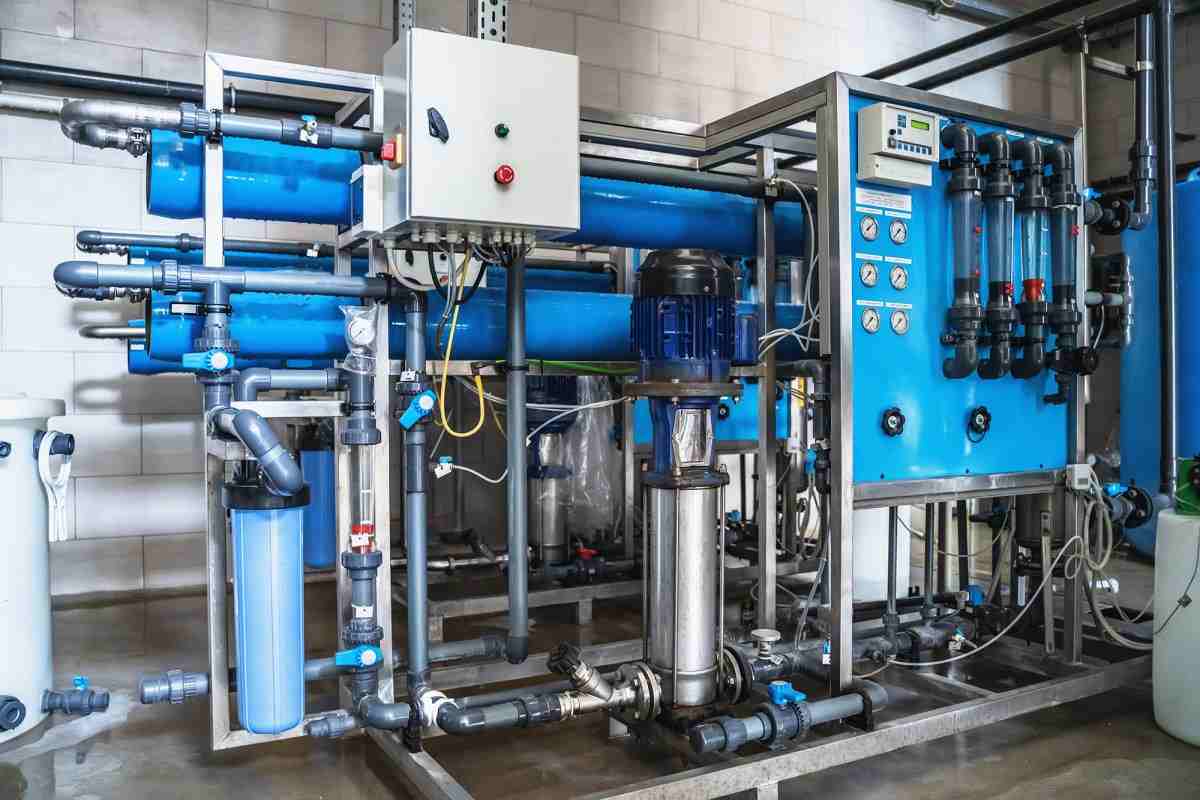 Without adequate treatment, boiler feed water can cause scaling, corrosion, and fouling of the boiler and downstream equipment, leading to costly plant downtime, maintenance costs, higher fuel consumption, and boiler failure. How they operate Effective boiler feed water treatment systems remove dangerous contaminants from the water before it enters the boiler and also regulates the acidity and conductivity of the water. Depending on the boiler pressure, steam usage, and chemical composition of the boiler feed and makeup water, a typical treatment system will include primary treatment and perhaps polishing. Typically, a boiler feed water treatment system will consist of any or all of the following procedures: Makeup water intake. Boilers lose water due to steam consumption, loss of condensate return, and leaks while they operate. This water must be replaced by so-called makeup water. The source of makeup water may be a treated municipal supply or a raw water treatment system. Filtration. Typically, the stream is filtered by one or more filtration units to remove silt, turbidity, and organic matter. Utilizing membrane filter units for pretreatment before to IX and other equipment can be a cost-effective way to reduce fouling and excessive maintenance of downstream equipment. Softening. IX is frequently used to remove hardness, including bicarbonates, sulfates, chlorides, and nitrates, from boiler feed water. This is achieved by the use of a softening resin, which is generally a strong acid cation resin that successfully captures hardness ions from the stream. Dealkalization. In boilers, alkalinity can induce foaming and carryover, as well as corrosion in the pipes. Therefore, boiler feed streams are often treated with strong anion IX or weak acid IX, followed by degasification, to remove bicarbonate, sulfate, and nitrate ions, therefore lowering the pH.
Without adequate treatment, boiler feed water can cause scaling, corrosion, and fouling of the boiler and downstream equipment, leading to costly plant downtime, maintenance costs, higher fuel consumption, and boiler failure. How they operate Effective boiler feed water treatment systems remove dangerous contaminants from the water before it enters the boiler and also regulates the acidity and conductivity of the water. Depending on the boiler pressure, steam usage, and chemical composition of the boiler feed and makeup water, a typical treatment system will include primary treatment and perhaps polishing. Typically, a boiler feed water treatment system will consist of any or all of the following procedures: Makeup water intake. Boilers lose water due to steam consumption, loss of condensate return, and leaks while they operate. This water must be replaced by so-called makeup water. The source of makeup water may be a treated municipal supply or a raw water treatment system. Filtration. Typically, the stream is filtered by one or more filtration units to remove silt, turbidity, and organic matter. Utilizing membrane filter units for pretreatment before to IX and other equipment can be a cost-effective way to reduce fouling and excessive maintenance of downstream equipment. Softening. IX is frequently used to remove hardness, including bicarbonates, sulfates, chlorides, and nitrates, from boiler feed water. This is achieved by the use of a softening resin, which is generally a strong acid cation resin that successfully captures hardness ions from the stream. Dealkalization. In boilers, alkalinity can induce foaming and carryover, as well as corrosion in the pipes. Therefore, boiler feed streams are often treated with strong anion IX or weak acid IX, followed by degasification, to remove bicarbonate, sulfate, and nitrate ions, therefore lowering the pH. 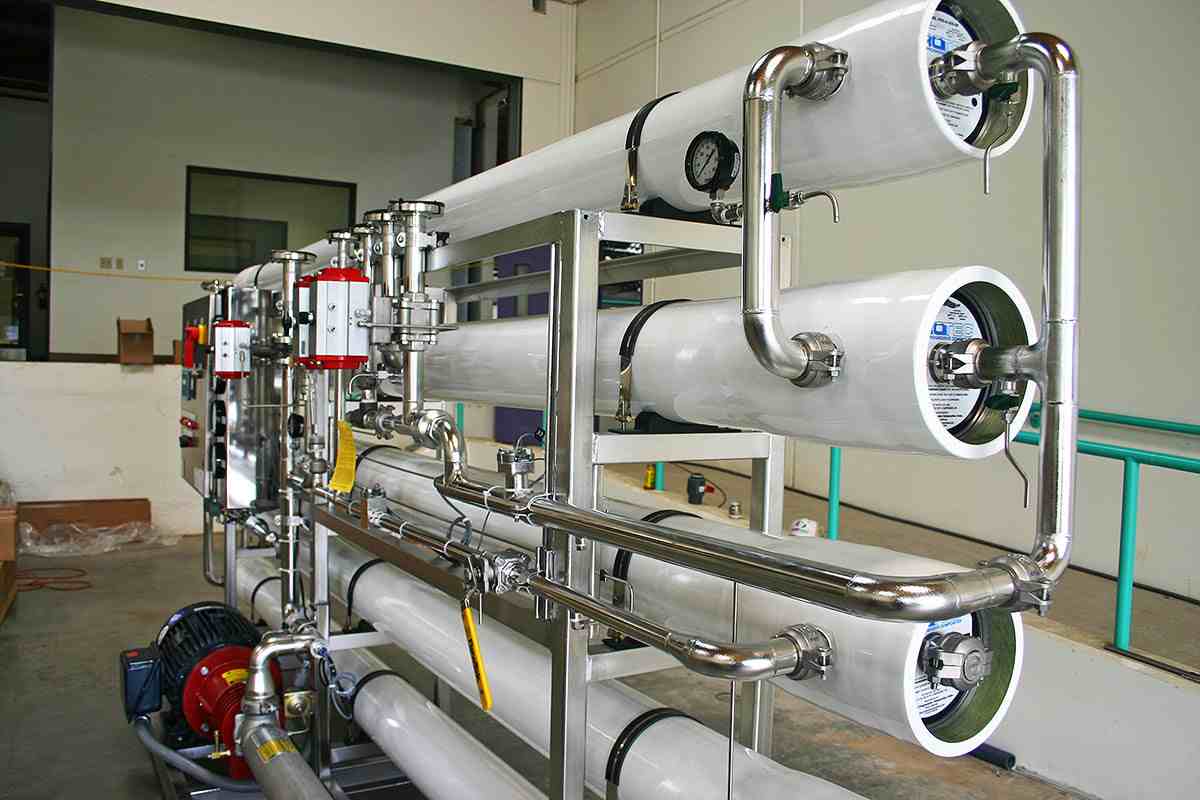 Reverse osmosis (RO) and nanofiltration are two methods for purifying water (NF). RO and NF are not always used to treat boiler feed water, although they can be effective for removing bacteria, salts, organics, silica, and hardness. RO and NF are both forms of membrane filtration, meaning they use a semi-permeable membrane to trap pollutants too big to pass through their pores while permitting water molecules to pass. Primary ion transfer (IX). Deionizers can be used instead of membrane filtration for huge amounts of water or high-pressure boilers. IX often generates water with greater quality, resistivity, and yields than IX. Deoxygenation or decompression. After all previous treatment stages, the boiler system makeup of water and condensate are mixed and regasified. Important for avoiding corrosion, deaeration/degasification is the removal of dissolved oxygen and carbon dioxide from a liquid stream. Polishing. Depending on the needs of the boiler, polishing technologies may be necessary. This phase may follow either RO or IX. Mixed bed deionization (DI), electrodeionization (EDI), and offshore regenerable DI are typical polishing processes. Distribution. After undergoing treatment, boiler feed water is pumped to the boiler, where it is boiled to produce steam. The condensate can then be blended with treated makeup water to restart the cycle. Although these procedures describe standard boiler feed water system trains, it is vital to note that a boiler's specific composition and chemistry necessitates a very sophisticated computation that dictates the required technologies. We advise consulting the boiler manufacturer for water purification requirements. Additionally, you should contact an expert in water treatment to undertake a comprehensive treatability study, which will help you identify which combination of these technologies is optimal for your boiler. Systems for cooling tower water treatment What they constitute The purpose of cooling tower water treatment systems is to protect cooling tower components from contamination in the feed water, circulation water, and/or blowdown water.
Reverse osmosis (RO) and nanofiltration are two methods for purifying water (NF). RO and NF are not always used to treat boiler feed water, although they can be effective for removing bacteria, salts, organics, silica, and hardness. RO and NF are both forms of membrane filtration, meaning they use a semi-permeable membrane to trap pollutants too big to pass through their pores while permitting water molecules to pass. Primary ion transfer (IX). Deionizers can be used instead of membrane filtration for huge amounts of water or high-pressure boilers. IX often generates water with greater quality, resistivity, and yields than IX. Deoxygenation or decompression. After all previous treatment stages, the boiler system makeup of water and condensate are mixed and regasified. Important for avoiding corrosion, deaeration/degasification is the removal of dissolved oxygen and carbon dioxide from a liquid stream. Polishing. Depending on the needs of the boiler, polishing technologies may be necessary. This phase may follow either RO or IX. Mixed bed deionization (DI), electrodeionization (EDI), and offshore regenerable DI are typical polishing processes. Distribution. After undergoing treatment, boiler feed water is pumped to the boiler, where it is boiled to produce steam. The condensate can then be blended with treated makeup water to restart the cycle. Although these procedures describe standard boiler feed water system trains, it is vital to note that a boiler's specific composition and chemistry necessitates a very sophisticated computation that dictates the required technologies. We advise consulting the boiler manufacturer for water purification requirements. Additionally, you should contact an expert in water treatment to undertake a comprehensive treatability study, which will help you identify which combination of these technologies is optimal for your boiler. Systems for cooling tower water treatment What they constitute The purpose of cooling tower water treatment systems is to protect cooling tower components from contamination in the feed water, circulation water, and/or blowdown water. 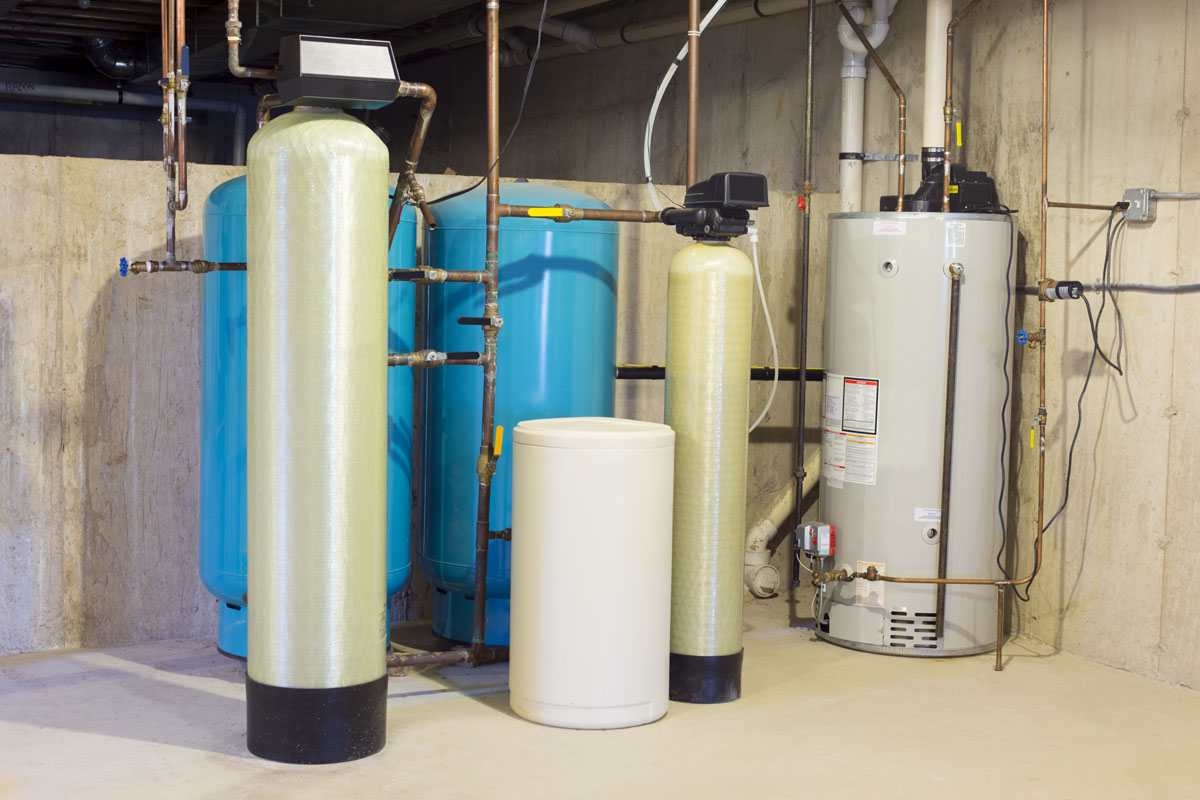 This may contain chlorides, hardness, iron, biological debris, silica, sulfates, TDS, and/or TSS. Untreated cooling tower feed water can result in scaling, corrosion, biological development, and fouling of cooling tower equipment, leading to costly plant downtime, decreased productivity, and exorbitant maintenance or equipment replacement costs over time. How they operate An efficient cooling tower water treatment system functions by eliminating hazardous contaminants by the manufacturer's water quality standards for the kind of cooling tower in use. Typical cooling tower water treatment systems consist of the following steps: Makeup water intake. A part of the circulating water in a cooling tower system is lost to evaporation, bleeding to drain, and leakage. This water must be replaced by so-called makeup water. Similar to boiler makeup water, cooling tower makeup water can be derived from a variety of sources, including raw water, municipal water supplies, wells, and recycled plant wastewater. In certain instances, source water must additionally be treated for removal of hardness or silica and/or pH correction. Filtration. Upon input, the stream is generally filtered by one or more filtration units to remove silt, turbidity, and organic matter. As indicated earlier, when filtration is utilized as a pretreatment before IX and other equipment, it may be a cost-effective way to reduce fouling and excessive maintenance of more sensitive downstream equipment. Softening. If the source/makeup water is extremely hard, a softening resin or membrane softener might be employed. If present, these pollutants will induce scale deposits and corrosion. Depending on the quality of the feed water, softening can increase the effectiveness of cooling tower water utilization. Chemical synthesis. Typically, the stream is then subjected to some form of chemical treatment, which may involve the application of corrosion inhibitors to neutralize acidity, algaecides, or biocides to reduce the growth of biological contaminants, and/or scale inhibitors to prevent contaminants from forming scale on pipes and other components.
This may contain chlorides, hardness, iron, biological debris, silica, sulfates, TDS, and/or TSS. Untreated cooling tower feed water can result in scaling, corrosion, biological development, and fouling of cooling tower equipment, leading to costly plant downtime, decreased productivity, and exorbitant maintenance or equipment replacement costs over time. How they operate An efficient cooling tower water treatment system functions by eliminating hazardous contaminants by the manufacturer's water quality standards for the kind of cooling tower in use. Typical cooling tower water treatment systems consist of the following steps: Makeup water intake. A part of the circulating water in a cooling tower system is lost to evaporation, bleeding to drain, and leakage. This water must be replaced by so-called makeup water. Similar to boiler makeup water, cooling tower makeup water can be derived from a variety of sources, including raw water, municipal water supplies, wells, and recycled plant wastewater. In certain instances, source water must additionally be treated for removal of hardness or silica and/or pH correction. Filtration. Upon input, the stream is generally filtered by one or more filtration units to remove silt, turbidity, and organic matter. As indicated earlier, when filtration is utilized as a pretreatment before IX and other equipment, it may be a cost-effective way to reduce fouling and excessive maintenance of more sensitive downstream equipment. Softening. If the source/makeup water is extremely hard, a softening resin or membrane softener might be employed. If present, these pollutants will induce scale deposits and corrosion. Depending on the quality of the feed water, softening can increase the effectiveness of cooling tower water utilization. Chemical synthesis. Typically, the stream is then subjected to some form of chemical treatment, which may involve the application of corrosion inhibitors to neutralize acidity, algaecides, or biocides to reduce the growth of biological contaminants, and/or scale inhibitors to prevent contaminants from forming scale on pipes and other components. 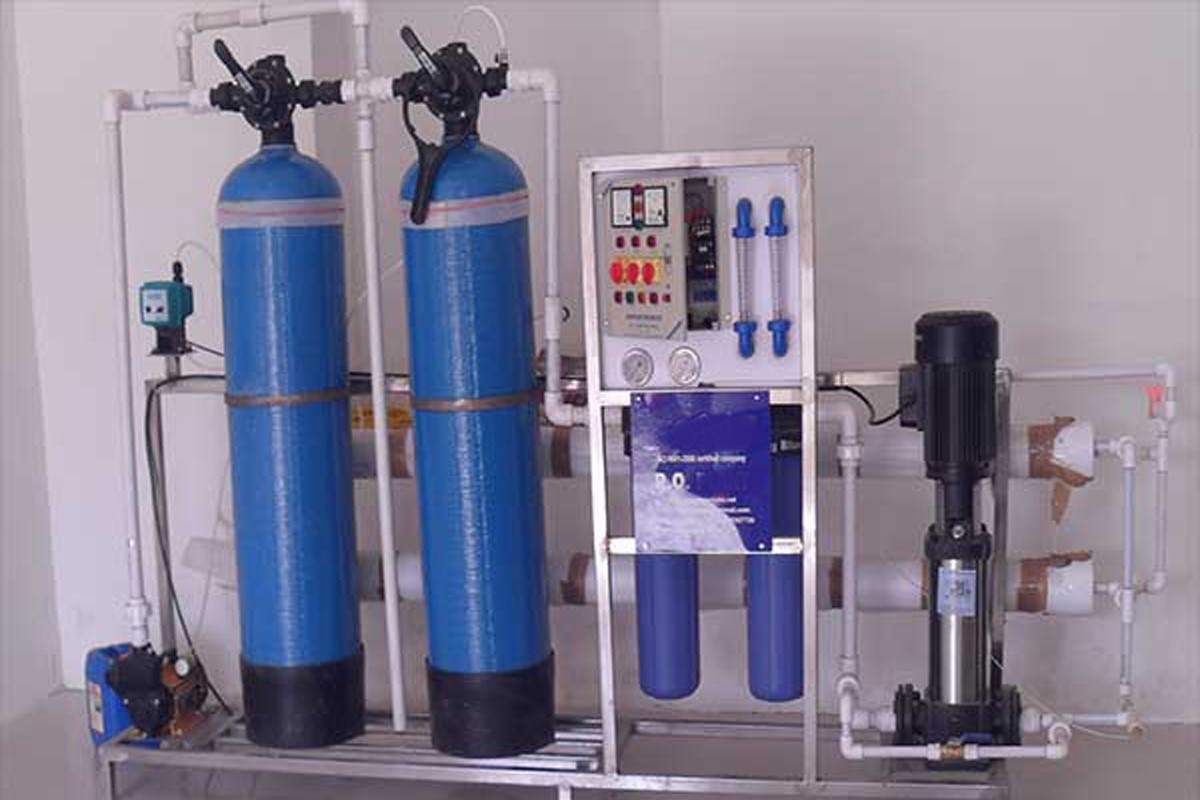 The use of side-stream filtering. Numerous cooling towers are built to recycle water after usage. If this is the case, a side-stream filtering unit will be useful for eliminating any troublesome pollutants that have entered the system via leaks, drift pollution, etc. Approximately 10% of the flowing water will typically pass through a high-quality multimedia filtration unit or SAMCO tube filtration system. Post-treatment. Depending on the characteristics of the plant, several post-treatment alternatives are available. If significant volumes of water are needed for cooling or if water is scarce at the facility's location, facilities may choose to treat and reuse blowdown water using RO or IX. Other post-treatment systems may be utilized for the release of blowdown water and/or bleed water to reduce disposal costs or bring the waste stream into compliance with discharge laws. Systems for treating wastewater What they constitute The purpose of a wastewater treatment system is to transform wasted streams into an effluent that may be reused or safely released to the environment or a municipal treatment facility. The most suitable wastewater treatment system will aid the facility in preventing damage to the environment, human health, and equipment, processes, or goods (especially if the wastewater is being reused). It will also assist the facility with avoiding hefty penalties and even legal action if wastewater is inappropriately released to the environment or publicly owned treatment facilities. The compliance laws affecting your facility and the nature of the waste stream will substantially influence the relative complexity of a wastewater treatment system. Wastewater treatment systems often treat for biochemical oxygen demand (BOD), nitrates, phosphates, pathogens, metals, TSS, TDS, and synthetic compounds, however, the pollutants contained in a waste stream might vary widely from one process to another. How they operate
The use of side-stream filtering. Numerous cooling towers are built to recycle water after usage. If this is the case, a side-stream filtering unit will be useful for eliminating any troublesome pollutants that have entered the system via leaks, drift pollution, etc. Approximately 10% of the flowing water will typically pass through a high-quality multimedia filtration unit or SAMCO tube filtration system. Post-treatment. Depending on the characteristics of the plant, several post-treatment alternatives are available. If significant volumes of water are needed for cooling or if water is scarce at the facility's location, facilities may choose to treat and reuse blowdown water using RO or IX. Other post-treatment systems may be utilized for the release of blowdown water and/or bleed water to reduce disposal costs or bring the waste stream into compliance with discharge laws. Systems for treating wastewater What they constitute The purpose of a wastewater treatment system is to transform wasted streams into an effluent that may be reused or safely released to the environment or a municipal treatment facility. The most suitable wastewater treatment system will aid the facility in preventing damage to the environment, human health, and equipment, processes, or goods (especially if the wastewater is being reused). It will also assist the facility with avoiding hefty penalties and even legal action if wastewater is inappropriately released to the environment or publicly owned treatment facilities. The compliance laws affecting your facility and the nature of the waste stream will substantially influence the relative complexity of a wastewater treatment system. Wastewater treatment systems often treat for biochemical oxygen demand (BOD), nitrates, phosphates, pathogens, metals, TSS, TDS, and synthetic compounds, however, the pollutants contained in a waste stream might vary widely from one process to another. How they operate 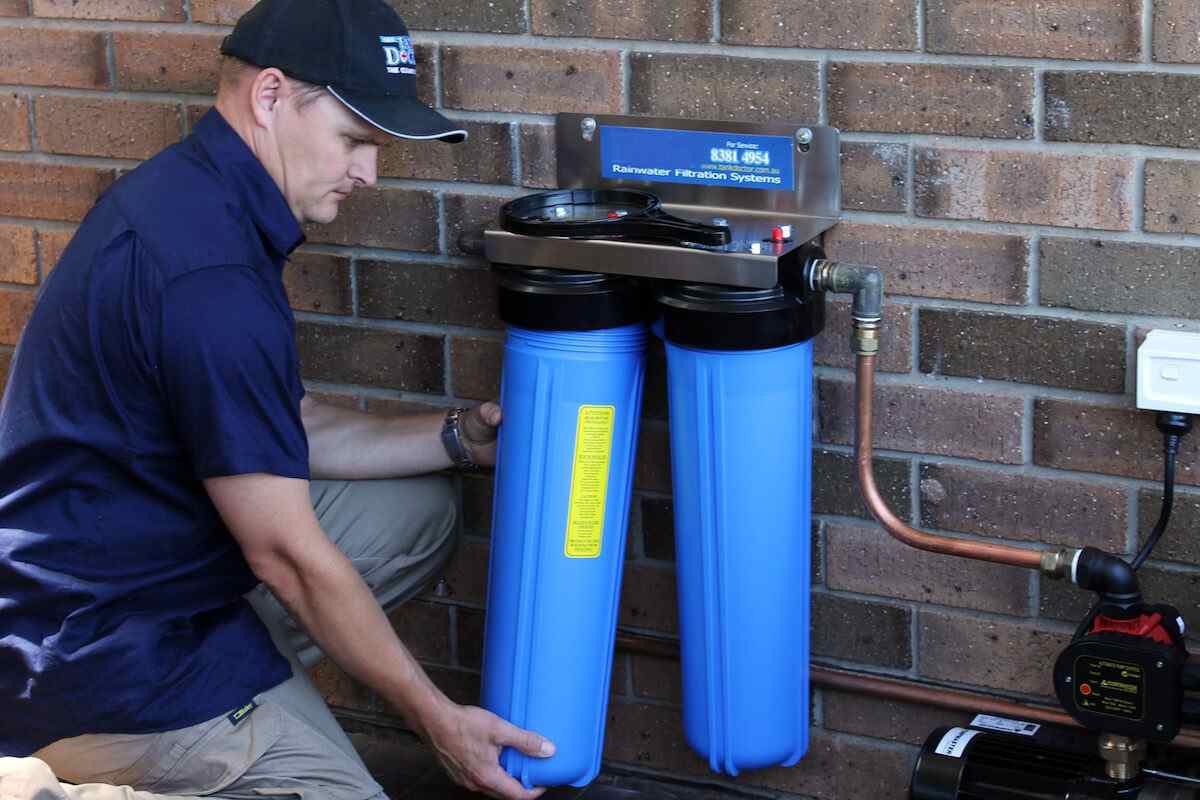 Although a wastewater treatment train will vary greatly from one installation to the next based on discharge limits, stream elements, flow reuse methods, and other considerations, the following technologies are among the most common: Clarification. Clarification, a multi-step procedure used to precipitate metals, and silica, and remove suspended particles from solution, is frequently the initial step in wastewater treatment. Depending on the nature of the wastewater, clarifying may consist of a succession of reaction tanks with chemical addition, coagulation, flocculation, sedimentation, and filtering. Typically, these processes are required to remove tiny particles and/or by-products, some of which can be recovered if they have value (such as silver or other materials) Disinfection. Pathogens—bacteria, viruses, fungi, and any other microbes that may be present in wastewater—can cause a variety of health concerns, including acute illness, severe digestive disorders, and even death. When industrial wastewater containing these pathogens is discharged into the environment, it can cause the spread of disease, making their removal or neutralization a crucial part of wastewater treatment. Softening. A lime softening step may be added to streams with excessive hardness or sulfates to lower mineral or sulfate concentration. The procedure involves the use of lime or lime soda to increase the pH of the stream, which in turn facilitates the precipitation of mineral components. In certain instances, IX or membrane softening may also be used. Special processes. In addition, there are specialized process stages for treating distinct wastewater concerns, such as the removal of certain metals or organics or the reduction of TDS for recycling. Since wastewater streams are often complicated and highly varied from facility to facility, specialized techniques are frequently necessary to satisfy all wastewater treatment requirements. Distribution. After wastewater treatment, the water is redirected for reuse inside the plant or, by local rules, released to the environment or municipal sewer. Moreover, because wastewater treatment is virtually always susceptible to changes in composition, flow rate, or effluent needs, a well-designed system should be able to manage such fluctuations and give scaling choices.
Although a wastewater treatment train will vary greatly from one installation to the next based on discharge limits, stream elements, flow reuse methods, and other considerations, the following technologies are among the most common: Clarification. Clarification, a multi-step procedure used to precipitate metals, and silica, and remove suspended particles from solution, is frequently the initial step in wastewater treatment. Depending on the nature of the wastewater, clarifying may consist of a succession of reaction tanks with chemical addition, coagulation, flocculation, sedimentation, and filtering. Typically, these processes are required to remove tiny particles and/or by-products, some of which can be recovered if they have value (such as silver or other materials) Disinfection. Pathogens—bacteria, viruses, fungi, and any other microbes that may be present in wastewater—can cause a variety of health concerns, including acute illness, severe digestive disorders, and even death. When industrial wastewater containing these pathogens is discharged into the environment, it can cause the spread of disease, making their removal or neutralization a crucial part of wastewater treatment. Softening. A lime softening step may be added to streams with excessive hardness or sulfates to lower mineral or sulfate concentration. The procedure involves the use of lime or lime soda to increase the pH of the stream, which in turn facilitates the precipitation of mineral components. In certain instances, IX or membrane softening may also be used. Special processes. In addition, there are specialized process stages for treating distinct wastewater concerns, such as the removal of certain metals or organics or the reduction of TDS for recycling. Since wastewater streams are often complicated and highly varied from facility to facility, specialized techniques are frequently necessary to satisfy all wastewater treatment requirements. Distribution. After wastewater treatment, the water is redirected for reuse inside the plant or, by local rules, released to the environment or municipal sewer. Moreover, because wastewater treatment is virtually always susceptible to changes in composition, flow rate, or effluent needs, a well-designed system should be able to manage such fluctuations and give scaling choices.
